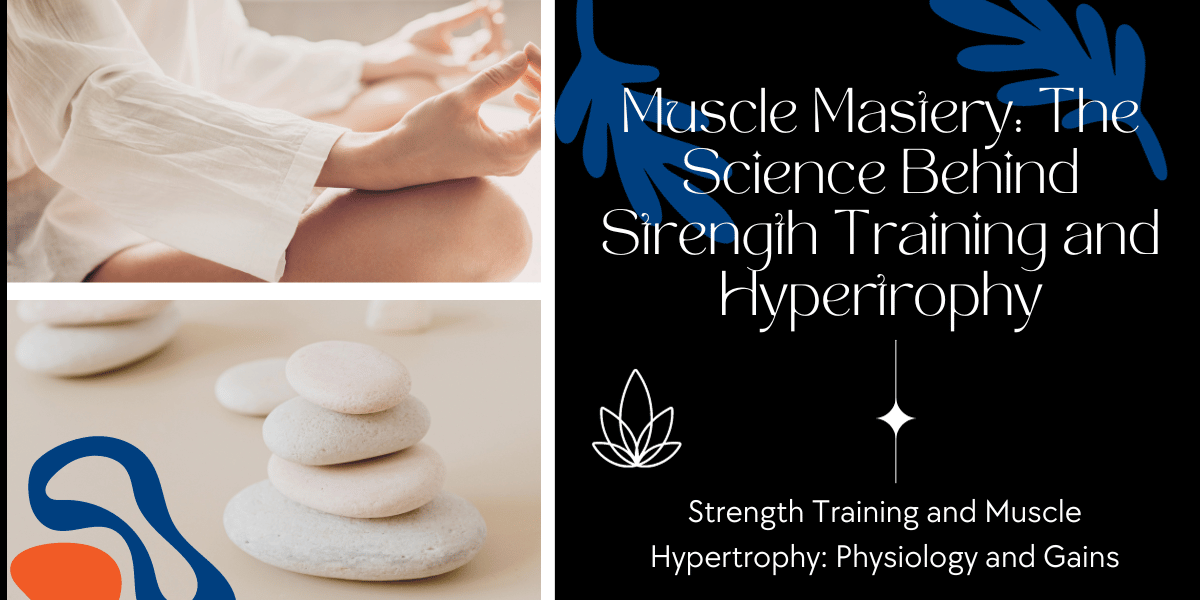Strength Training and Muscle Hypertrophy: Physiology and Gains
Muscle Mastery: The Science Behind Strength Training and Hypertrophy
Muscle Mastery: The Science Behind Strength Training and Muscle Hypertrophy”
In the realm of fitness, strength training stands as a cornerstone, revered for its ability to transform the body through muscle hypertrophy. Muscle hypertrophy, the process of muscle growth and increase in size. It is a physiological marvel that occurs in response to targeted strength training exercises. Understanding the intricate relationship between strength training and muscle hypertrophy is crucial for fitness enthusiasts aiming to sculpt their bodies and optimize their gains. In this blog post, we will explore the physiology behind strength training, the mechanisms of muscle hypertrophy, and how this knowledge can pave the way for significant fitness achievements.
The Physiology of Strength Training
Strength training involves resistance exercises, challenging muscles to overcome resistance, leading to microscopic damage in muscle fibers. This damage triggers a cascade of physiological responses orchestrated by the body to repair and reinforce the muscle tissues. Key physiological factors in strength training include:
- Muscle Fibers and Microtears: During strength training, muscle fibers experience microtears. The body repairs these tears by fusing the muscle fibers, resulting in increased muscle mass over time.
- Hormonal Response: Intense strength training prompts the release of anabolic hormones such as testosterone and growth hormone, further stimulating muscle growth and repair.
- Nutrient Delivery: Adequate nutrition, especially protein intake, plays a vital role. Protein supplies the building blocks (amino acids) necessary for muscle repair and growth.
- Muscle Protein Synthesis: Strength training boosts muscle protein synthesis, the process by which the body builds new muscle proteins, essential for hypertrophy.
Mechanisms of Muscle Hypertrophy
Muscle hypertrophy occurs through two primary mechanisms:
Myofibrillar Hypertrophy:
This form of hypertrophy involves an increase in the size and number of myofibrils, the contractile units within muscle fibers. Myofibrillar hypertrophy leads to significant gains in strength.
Sarcoplasmic Hypertrophy:
Sarcoplasm is the fluid and energy storage substance within muscle cells. Sarcoplasmic hypertrophy involves an increase in the volume of sarcoplasm, contributing to muscle size and endurance.
Optimizing Muscle Hypertrophy
- Progressive Overload: Gradually increasing the resistance over time challenges muscles, promoting continuous growth.
- Proper Nutrition: A balanced macronutrient diet and an adequate protein consumption promote muscle growth and repair.
- Rest and Recovery: Muscles require time to recover and develop. It’s crucial to get enough sleep and take recovery days.
- Variety in Training: Incorporating different exercises and techniques keeps muscles engaged, preventing plateaus and encouraging hypertrophy.
Conclusion
The symbiotic relationship between strength training and muscle hypertrophy is a testament to the human body’s adaptability and potential for transformation. By understanding the physiological intricacies involved, fitness enthusiasts can tailor their workouts, nutrition, and recovery strategies, maximizing muscle gains and achieving their desired physique. Armed with this knowledge, individuals embarking on their fitness journey can navigate the path to muscle mastery, achieving remarkable strength, endurance, and a sculpted physique.





